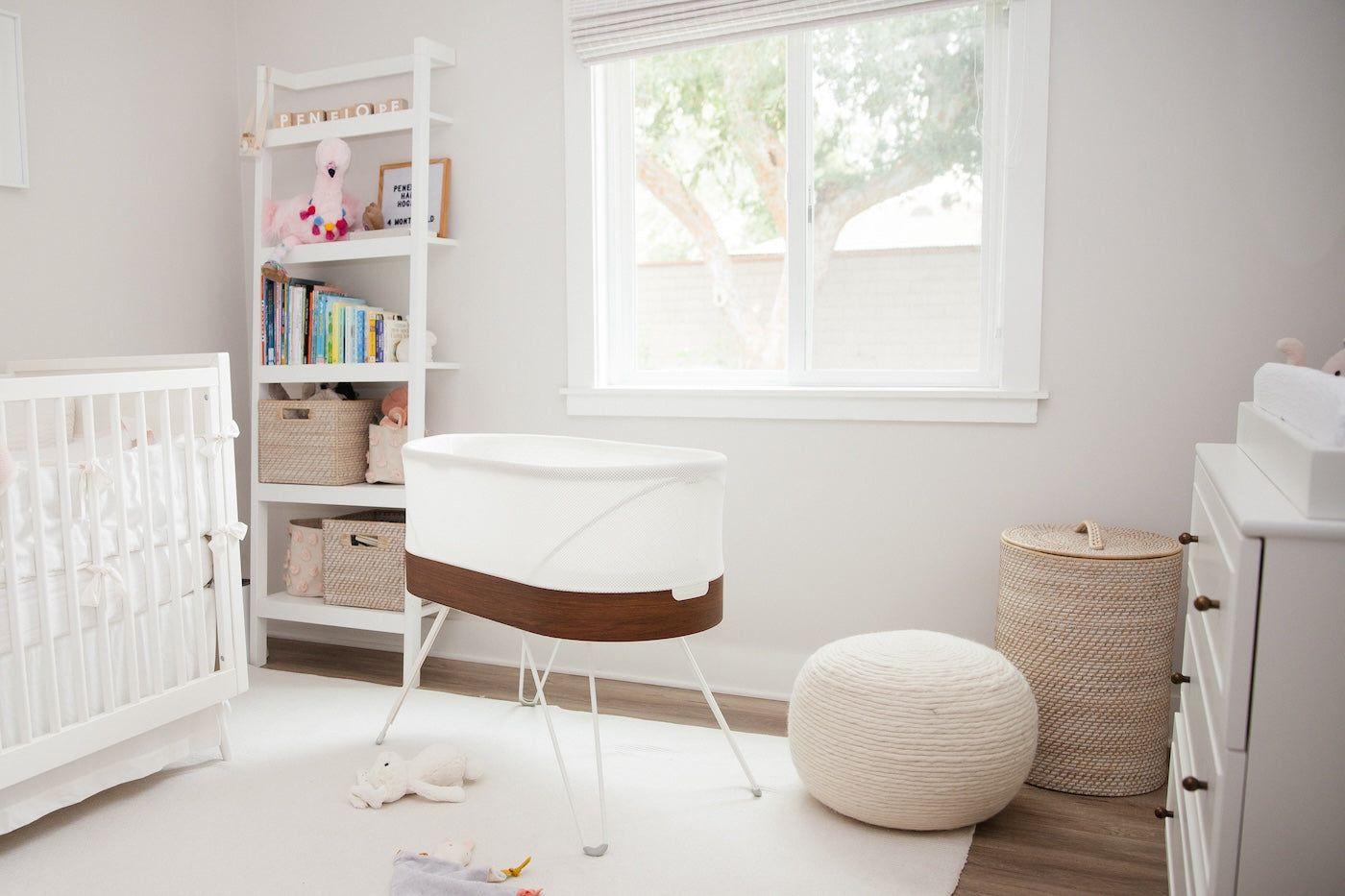BABY
How to Optimise Your Baby’s Nursery for Better Sleep
Creating the perfect nursery isn’t just about aesthetics, it’s about helping your baby get the rest they need.

Written by
Happiest Baby Staff

SHARE THIS ARTICLE
PARENT PICKS
Bestsellers
BABY

Written by
Happiest Baby Staff

SHARE THIS ARTICLE
Bestsellers
Creating the perfect sleep-friendly nursery isn’t just about style—it’s about helping your baby get the rest they need. A thoughtfully designed sleep space can support your little one’s body clock, reduce night waking, and even lower the risk of sleep-related problems. Here are science-backed ways to transform your baby’s nursery into a dreamy sleep haven.
Babies sleep best in rooms that are cool (around 20–22°C), dark, and free from jarring noises. Plus, overheating is a known risk factor for Sudden Infant Death Syndrome (SIDS), so keeping the room at a comfortable temperature is a safe-sleep essential, too!
If you’ve ever tried to nap with sunlight pouring through the window, then you won’t be surprised to learn that a consistently dark sleep environment helps babies sleep longer at night. In fact, research shows that babies who sleep in lighter rooms may get around 30 minutes less sleep per night. Use blackout curtains or blinds to block outside light and keep the nursery dim during night-time sleep and naps.
Of course, total darkness isn’t always practical—but choose your lighting carefully!
Your baby’s internal clock (or circadian rhythm) is sensitive to light. Bright artificial light—especially the blue light from screens—can suppress melatonin and interfere with sleep, even in babies. That’s why paediatric sleep experts recommend dim, warm-toned lighting in the nursery, especially in the evenings.
Try a dimmable nightlight or a small lamp with a red or amber bulb for those night-time feeds. Avoid switching on the overhead light during middle-of-the-night nappy changes and keep light exposure low to help cue your baby that it’s still sleep time. (SNOObie’s nightlight gives parents a range of colours to choose from, including calming red and orange tones!)
While silence might seem ideal, babies are used to the whoosh of sounds in the womb! That’s why consistent white noise—like the gentle shushing of SNOObie or SNOObear—can be incredibly comforting and help mask sudden background noise.
More important than boosting sleep is ensuring that your little one is sleeping safely. That means in a cot, bassinet, or portable crib with a firm, flat mattress covered by a fitted sheet—free of pillows, loose bedding, or soft toys.
Smart bassinets like the SNOO add an extra layer of safety and reassurance by gently securing babies on their backs and automatically responding to cries with soothing motion and sound. This can help babies (and parents!) enjoy more restful nights—while maintaining safe sleep practices.
Position the cot away from windows to avoid draughts, direct sunlight, and outdoor noise. This not only helps regulate the room’s temperature and light but also minimises disturbances that can wake your baby.
A tidy nursery isn’t just more pleasant—it’s safer for bub, too. Reducing clutter around the cot ensures nothing can accidentally fall in and interfere with your baby’s safe sleep space. Plus, keeping nappy supplies, pyjamas, and wraps close at hand makes bedtime routines easier, which is important for building reliable sleep cues.
Babies nap frequently in the first year, and those catnaps help consolidate night-time rest. The same sleep tools—like blackout blinds and white noise—work a charm during the day, too. A consistent nap spot, such as the same cot or bassinet used at night, strengthens positive sleep associations. Regular nap routines and consistent environments go a long way toward better overall sleep.
As your baby grows, their sleep needs and habits will evolve. Having a nursery that adapts—with features like dimmable lights, adjustable white noise, or a cot that converts to a toddler bed—can help you support them through every sleep transition.
Optimising your baby’s nursery isn’t about fancy gadgets or picture-perfect styling—it’s about creating a calm, safe, and consistent sleep space. By following science-backed tips and tuning into your baby’s needs, you can help your little one get the restful sleep they need to grow and thrive.
***
REFERENCES
Disclaimer: The information on our site is NOT medical advice for any specific person or condition. It is only meant as general information. If you have any medical questions and concerns about your child or yourself, please contact your health provider. Breastmilk is the best source of nutrition for babies. It is important that, in preparation for and during breastfeeding, mothers eat a healthy, balanced diet. Combined breast- and bottle-feeding in the first weeks of life may reduce the supply of a mother's breastmilk and reversing the decision not to breastfeed is difficult. If you do decide to use infant formula, you should follow instructions carefully.